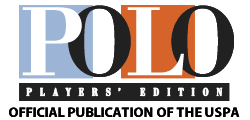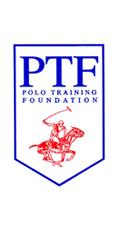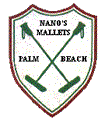|
I had the wonderful opportunity to meet Argentinian artist Esteban Diaz Mathé at an asado hosted by the Aspen Valley Polo Club in Carbondale, Colorado, during the 2019 USPA Silver Cup this past summer. He showed me a number of images on his smart phone of some of the paintings and drawings he had done of Argentine gauchos and landscapes.
I was astounded, as others around me were, by his use of vivid colors and his unique mastery of capturing the various expressions on the faces of the people depicted within his art. My first thought was this guy was a truly a master, much like a modern-day di Vinci, using techniques reminiscent of Rembrandt’s Chiaroscuro or even suggestive of Thomas Kinkade’s use of ambient light. My other thought was they were so realistic they might be mistaken for photographs.
The images he depicts are so vivid, so expressive – so alive. They are pure expressions of a true artist who captures the vital essence of horses, people and landscapes. Diaz Mathé is a master artist who can make magic combining colors and canvas to create feelings and passion—just like the masters of old that he studied and now emulates and honors with his extraordinary art.
We continued our discussion via texts and emails after he continued on his summer travels in Colorado and in Wyoming as the guest of Polo Hall of Famer Skey Johnston and Skey’s wife Gil.
As Esteban tells it, his forebears at the early part of the 1800s were poor but determined to better themselves by migrating from Spain to Argentina to begin a modest business, which prospered to the extent that their descendants married into a landed family. Today, Esteban’s family has its own estancia, which spans hectares of cattle ranching located about 200 miles northwest of Buenos Aires.
He said, “I had a privileged upbringing because I was born into a family which could offer us so many opportunities.” Like his three elder brothers, he was educated in the city-environs of Buenos Aires. Each brother eventually found their own career paths.
As children, Esteban and his brothers would spend three months each summer at the family estancia. He also enjoyed hunting and fly-fishing in Patagonia, however, his first loves were the gauchos and their horses.
“To me they were a dream, they were my friends and my father-figures. At dawn each day they would call for me with a horse and I would ride with them all day,” explained Esteban.
Many of the gauchos remain his friends though some have since retired. Esteban recalls it was the gaucho’s affinity for horses, cattle and wide open spaces that reminds him of the iconic North American cowboys, with some important differences. While Hollywood films depicted the Wild West cowboy with six-shooters, the gauchos’ chosen weapon is el facón, a sharp, long-bladed knife used for everything from fighting to cutting meat.
Gauchos, the offspring of 17th century Spanish colonizers and indigenous American women, were perceived by their colonial rulers as lazy and troublemakers, though useful and admired for their skill with horses and cattle. Sprawling estancias have long been fenced, but their owners still employ the legendary gauchos to manage their cattle and horses. Throughout Argentina’s 19th century-era hostilities to end Spanish imperial rule, the gallant gauchos largely made up the Argentine cavalry and won the admiration of their new-found, homeland. Today, they are hardworking horsemen dedicated to horses and livestock, celebrated annually in rodeos and in songs and dances of cultural events.
According to biographer Masha Malinowski, “The vast majority of the Argentine population now live in and around cities. Yet, just as Americans hold dear an image of rugged individualism and independence, the Argentines still view the gaucho as the embodiment of the Argentine soul. To this day, the gauchos can still be easily found going about their work throughout the Argentine outback. For how long, no one can say. Their way of life is deeply imprinted on the Argentine psyche and will be forever preserved by the art of Esteban Diaz Mathé.”
Esteban’s path from the estancia to the city led him to the University Del Salvador from where he graduated with a degree in psychology. From there he switched to architecture and joined a firm where he specialized in human resources.
“As a hobby, I started drawing and discovered my gift for art. From drawing with a pen, I went to charcoal and from there to paint. I copied prints of the great masters, Michelangelo, de Vinci, Caravaggio, Rembrandt and the Spanish painter Joaquin Sorolla, who was famous for his landscapes and portraits.”
Some within the Buenos Aires art community urged him to become an artist, even though he had no formal art training. He admits he had doubts about his ability, but people were buying his paintings, so he decided to give up architecture to become a traveling artist, and made it a life quest to discover and explore more of Argentina, its people and landscapes.
Esteban was hosted by owners of about 40 estancias in 10 of Argentina’s 23 provinces. He took many photographs as he journeyed across Argentina, never intending to be copied as paintings, but more intended to offer suggestions in their light, color and facial expressions of the gauchos and their horses, adding or deleting photographic details to enhance the essence of his paintings, a practice he continues to this day.
Esteban lovingly acknowledges the credit for his success goes to his wife Florencia, a lawyer he met by chance during his first sojourn across Argentina.
“She’s the love of my life. She supported me 100 percent,” he explained. “When you dream of something outside the box, you really must feel you can do it.”
They married and now have a 4-year-old son, Lorenzo, and a 1-year-old daughter, Elena.
In 2012, Esteban published and edited his first book of artworks: Ser Argentino (Being Argentine). The bilingual text was written with the help of Mariano Fernandez, a freelance journalist who contributes to livestock pastoral magazines.
The book’s cover flap reads, “Gathering information, investigating and sharing his daily work with rural people, Esteban Mathé seeks to capture through his paintings the very essence of the national being.” The book was awarded the Congress Honor Award in Arts and became a protocol gift from the Argentine Congress to all international dignitaries that visit Argentina, presidents, diplomats or key international business representatives. In addition, the Argentine Ministry of Foreign Affairs distributed copies of Ser Argentino to its 80 embassies around the world, and 3,000 copies were sold to Buenos Aires banks and business houses. Soon after Esteban published Ser Argentino, he and his art came to the attention of Marcos Uranga, the well-respected former president of the Argentine Polo Association and founder and first president of Federation of International Polo.
Uranga contacted Esteban, expressed admiration for his artwork and urged him direct his talent to celebrating the sport of polo.
“Though I’ve loved horses and riding all my life, I only played ‘fun’ polo as a kid with a friend whose family owned a horse-stud operation outside Buenos Aires.”
With Uranga’s encouragement, Esteban started watching polo and taking photos at all the important tournaments, such as Hurlingham, Tortugas and Palermo. Uranga convinced him to submit polo drawings for the official history of FIP, commemorating its 30th anniversary. That led to more commissions. Most recently, Esteban completed the covers of the past five annual editions of the Argentine Polo Pony Breeders’ Association.
Esteban developed and renewed friendships and won the support of such eminent polo families as the Pieres, Mac Donoughs and Novillo Astradas.
“Since I started my artist career in polo, Alejandro Novillo Astrada, a friend of mine since we were kids, introduced me to his father, Taio Novillo Astrada, who really supported me constantly. Alejandro later introduced me to Skey and Gil Johnston, who, once he saw my work in Argentina, told me that you must paint in the United States and paint our polo and our Western culture.”
This past year, Esteban was commissioned to paint for a tribute to Cambiaso at La Dolfina, and was asked by Facundo Pieres to paint his three helmets used for the Tortugas, Hurlingham and Palermo Open tournaments. After the tournaments, the helmets were sold at a charity auction. In addition, Jorge and Pablo Macdonough commissioned him to create the logo of their polo operations La Irenita.
After an invitation from Skey Johnston to visit his ranch to feel, explore and live the West, Esteban spent a portion of the summer in Wyoming researching and then capturing the region’s distinctive and iconic images of people, animals, events and locations.
He credits the generosity of the Novillo Astrada and Johnston families for the opportunities to see places and people outside of his home country and for his traveling adventures to unknown lands and cultures. As soon as he stepped onto Johnston’s Flying H Ranch, and visited the famed Sheridan Rodeo, Esteban says he felt like he was home.
“The similarities between gauchos and cowboys were fascinating, and I got the sense of the common ways of how they think and talk, both externally and internally. They are men of the land, the men of horses and cattle. They are the same people worldwide because it is nature that sculpted their spirit,” he said.
The Johnstons continued their hospitality by inviting Esteban to their home in Chattanooga, Tennessee, where he studied Johnston’s huge library of books of western paintings and sculptures. Those books gave him a real appreciation for the American culture from the many artistic approaches by so many talented artists.
This summer, 29 pieces of Esteban’s art were featured in a “Gauchos, Cowboys and Polo” display at The Brinton Museum, located in the foothills of the Big Horn Mountains, near Big Horn, Wyoming. The museum also features 19th, 20th and 21st century Western and American Indian art. The Johnston’s also introduced Esteban to Bill King’s Bozeman Trail Gallery as well as nearby horse and cattle ranches. Johnston is encouraging Esteban to research and paint the traditional and iconic western scenes of cowboys and indians, as well a capture other aspects of the American horse world, like what he as done in Argentina. Gil Johnston also commissioned Esteban to paint a portrait of her best steeplechase horse, Mr. Hot Stuff.
“A whole new chapter in my career just began, and I hope to keep visiting this amazing country,” Esteban said of the U.S. “I will do my best to provide a tribute to your people and to your culture with my art and my soul. Once again, the sport of polo is the bridge between our two cultures.,” he said.
-- by Peter Rizzo
|









